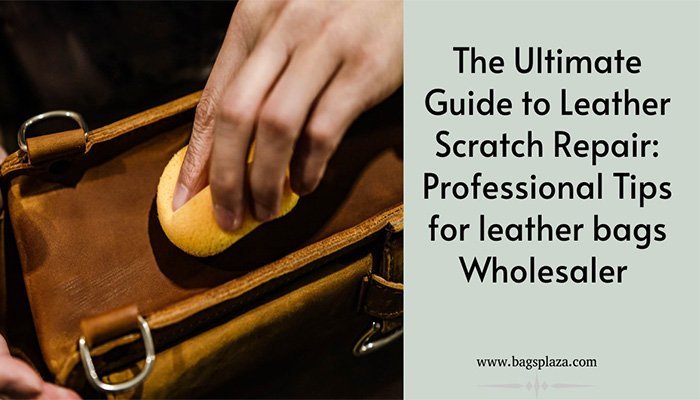Leather bags are lifetime investments with proper care and maintenance. Understanding the process of leather bag repair is vital for bulk buyers.
It maximizes inventories and preserves leather bags. Partnering with skilled manufacturers allows you to deliver value to your customers.
Leather bags can be professionally repaired to extend their lifespan. Common fixes include many things, like stitching, zipper replacement, and color restoration. However, the repair method you choose depends on the damage extent and bag quality.
Today’s customers value long-term viability and sustainability. If you repair and restore leather bags in stock, your business will stand out. Professional leather repair services can fix minor to large rips and damages.
It makes clients happier and shows that your leather goods are durable. Thus, brand loyalty and consumer retention may increase.
Is Leather Bag Repair Possible?
It is not only possible, but frequently very effective, to fix a leather bag. Wholesalers/retailers leather bag dealers must understand the repair process. Good knowledge of bag repairs maximizes inventory value and customer happiness.
Professional leather workers can repair everything from cosmetic to structural defects. Sustainable and long-lasting products are in demand. Thus, leather bag repair and preservation meet that demand.
Statista expects the luxury leather products industry to be worth US$79.36bn in 2024. This shows that leather goods, including bags, are always in demand.
Wholesalers/retailers could gain an advantage by offering extra services.
How to Find Defects in Leather Bags – Guidelines for Wholesalers and Retailers
The ability to discern flaws is vital if you sell bulk leather bags. Visual inspection and functional testing are the two primary parts of this approach. Knowing these helps enhance quality control and smarter inventory decisions. Let’s take a closer look at these techniques:
1) Visual inspection
A careful visual examination is the starting point for finding flaws in leather bags. As a leather bag wholesaler, you must adhere to this procedure. Check the goods in well-lit areas, ideally in the middle of the day, before moving on to other steps.
Examine leather for visible indications of wear and tear. Scuffs, scratches, discoloration, and uneven texture are examples.
Wear and tear are most likely on the bag’s corners and edges. So be sure to inspect them thoroughly. Make sure there are no holes, sloppy stitches, or loose threads. Look for rust, corrosion, or loose attachments on the hardware.
Natural leather texture and color variability can give the bag character. The objective is to find flaws that make the bag seem or feel less than ideal.

2) Functional testing
Examine the bag’s functionality after the visual check to ensure it works as expected. Verify that all fasteners, including zippers, clasps, and buckles, work smoothly. You can test these by opening and closing the bag multiple times.
Use a light tug to see how sturdy the straps and handles are. Adjust the shoulder straps to different lengths to test the mechanism.
Check the clasp and lining of all internal pockets and compartments. Connect and disconnect the bag’s removable strap several times to ensure it’s secure.
Make sure the feet or protective bottom studs are securely fastened. They must offer sufficient support for bags with them.

What Are the Common Defects Found in Leather Bags?
Different defects occur with leather bags. Knowing these can help you identify how to handle each of them. On that note, here are some common defects found in leather bags:
Defect 1: Manufacturing-related issues
Most leather bag complaints center on flaws in the manufacturing process. These issues compromise both the look and the practicality of the bag. Recognizing these flaws is crucial for quality control and customer satisfaction. Below are some manufacturing-related issues:
1) Stitching defects
One typical leather bag manufacturing-related issue is stitching defects. These defects might be minor or detrimental to the structure. Missed stitches, slack threads, and unequal lengths are common sewing flaws. The stitching may have wholly come undone in several spots.
Hence, it is critical to carry out comprehensive quality checks. This is particularly true when manufacturing large orders. Carefully look at the bag’s seams and stress points to find stitching problems. Pay attention to weight-bearing areas like bottom corners and handle clips.
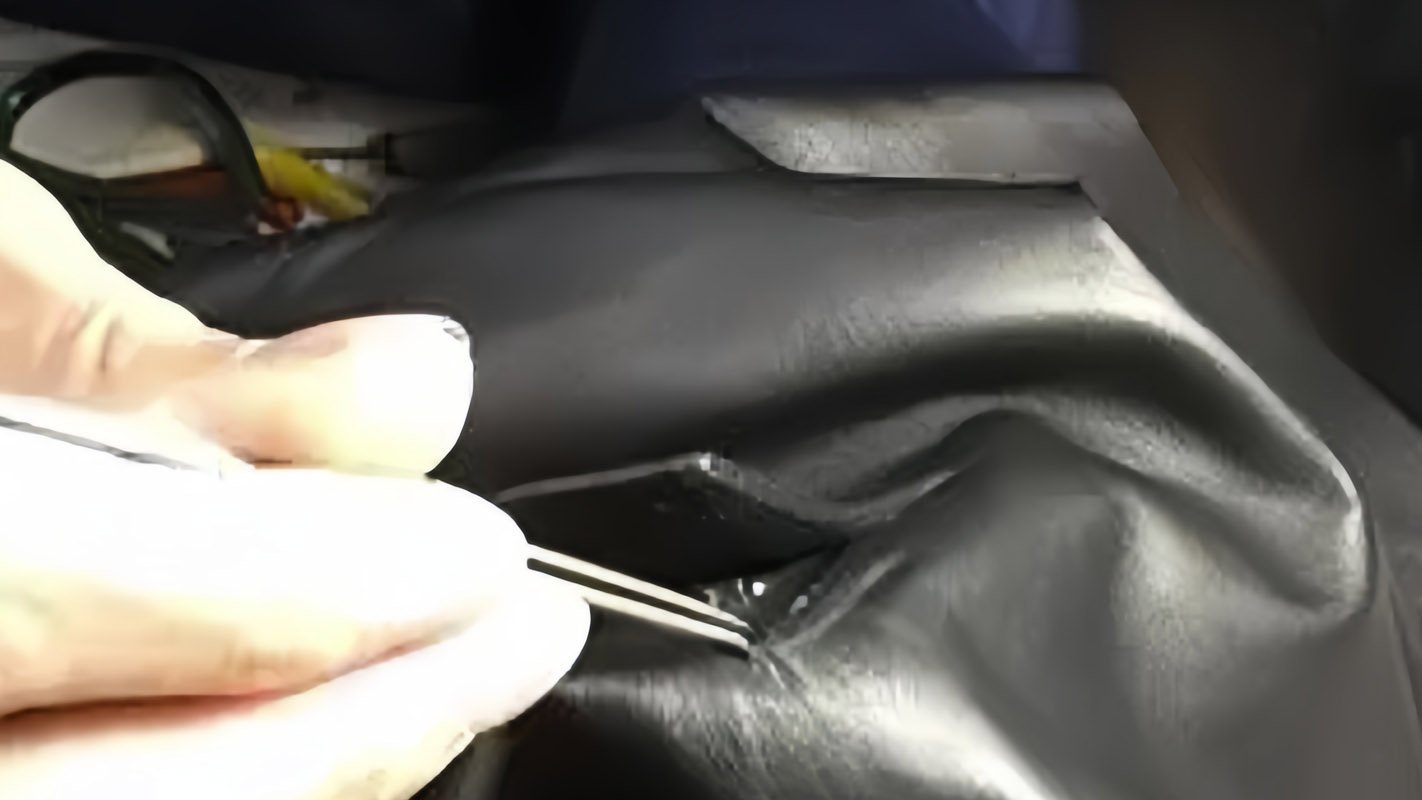
2) Structural issues
Structural flaws affect the useful life and longevity of a leather bag. Mistakes made during cutting or assembly are a common cause of these problems.
Asymmetrical designs and poorly reinforced stress points are common structural flaws. Malformed panels also fall into this category. According to industry statistics, 10% of leather product manufacturing faults are structural.
Repairing structural faults might be more complicated and costly. So, it’s crucial to take note of the bag’s general form and stability while you examine leather goods.
3) Finishing problems
Have you ever seen a bag that looks like it got into a fight with a paintbrush? That’s what we call uneven dye application. Of course, a little color variation is normal, but big splotches are a no-no.
The leather undergoes finishing treatments to enhance appearance and durability. Finishing problems affect the look and functionality of leather bags. An example of a common finishing flaw is the uneven application of dye.
The outcome is patchy or streaky coloration on the leather surface. Slight color variation is inherent to genuine leather. However, noticeable irregularities may indicate low-quality finishing.
Cracking or peeling finish is another problem. Easy cracking or peeling is a sign of low-quality materials or application methods. This compromises the bag’s aesthetic. It also leaves the leather bag vulnerable to wear and tear.
Leather bags can get an artificial or excessively stiff texture from specific treatments. Thus, it lacks the luxurious texture of genuine leather. Hence, careful quality inspections during leather goods finishing are crucial.
Check the bag under various lights for color inconsistencies to find finishing flaws. Run your palm over the surface to feel any roughness or peeling finish. Check for cracks or separations in the finish by gently flexing the leather.
Defect 2: Material-related issues
Material issues worry leather bag wholesalers and merchants. These faults may cause client dissatisfaction and lead to refunds. Some common material flaws in leather bags include defects in finishing and lining. The following texts explain these better:
1) Leather defects
Since it is a natural material, leather may have some flaws. Still, some flaws can ruin the bag’s quality and exceed what’s acceptable. One typical flaw in leather is scarring. Minor scarring can give leather character. However, deep or extensive scarring can damage the material.
Loose grain occurs when the top layer of the leather separates from the lower layers. It causes the skin to look wrinkled or even bubbled. If the grain is not tightly packed, it can compromise the bag’s longevity.
Uneven leather thickness might also damage the bag’s construction and appearance. Hence, it is critical to source leather with care.
Feel the leather bag’s surface for imperfections and unusual textures before payment. Check the leather for thin or strained areas. You can find hidden flaws in leather by paying close attention to how it reacts when folded or bent.

2) Hardware problems
Problems with the hardware are another typical production flaw in leather bags. Metal parts like zippers, clasps, and buckles are susceptible to these issues.
There may be stuck or misaligned zippers or rivets that are missing or loose. Also, tarnished or scraped metal surfaces are common hardware faults.
Thorough testing of all hardware components is essential. It is crucial to test each piece of hardware several times while inspecting bags.
The ultimate goal is to ensure its smooth operation. Premature wear or damage could indicate low-quality materials or shoddy installation.
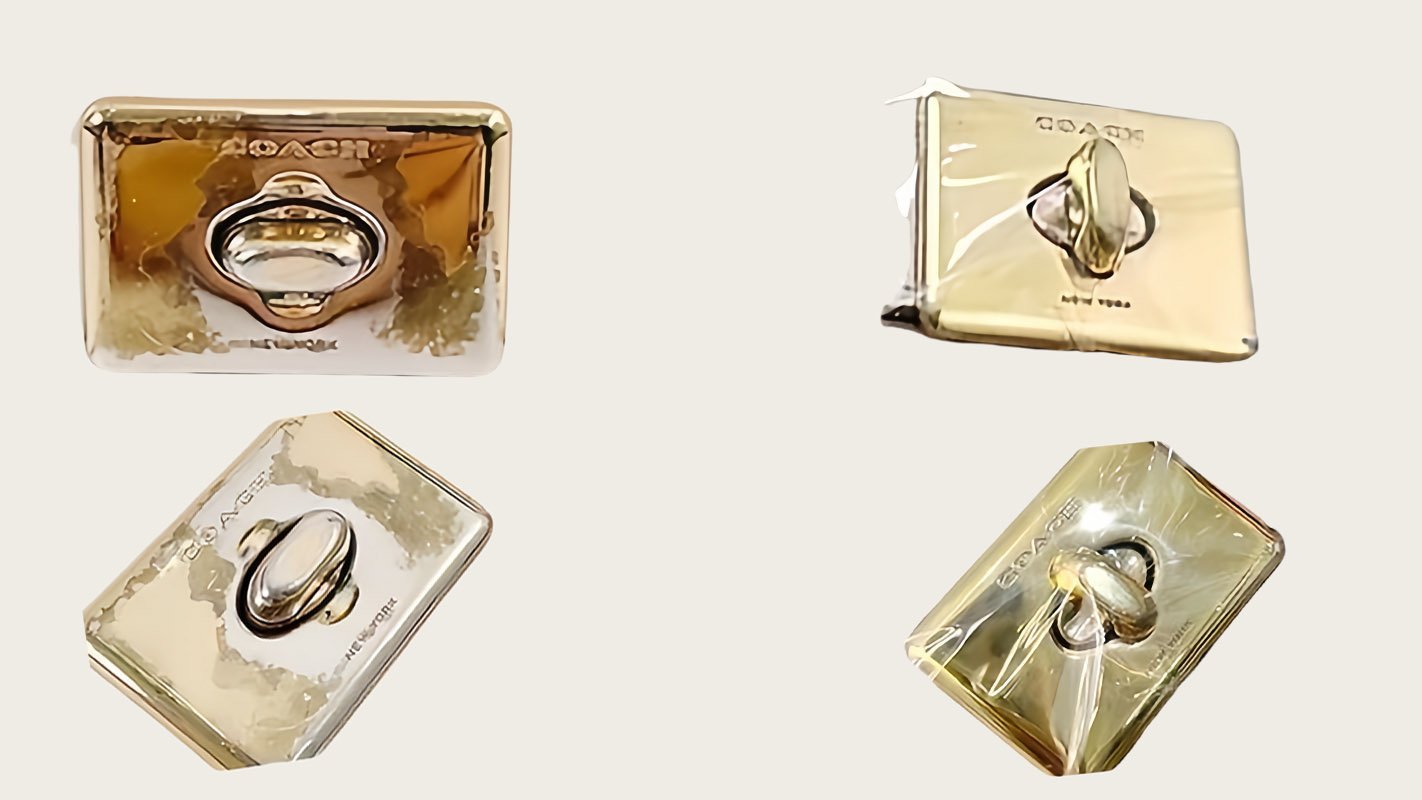
3) Lining defects
If you want your leather goods to last and serve their purpose, you must pay close attention to the lining. If the bag’s lining is defective, the interior may wear out faster than expected.
Weak or torn lining is a common problem. The use of low-quality materials or sloppy building methods can cause this.
Another flaw is poorly attached lining. Ensure the lining is adequately bonded to the leather shell to get the most out of the bag’s internal space. Otherwise, it can bunch up or shift.
Some manufacturers may line a bag with low-quality materials to save costs. This may increase wear and tear inequality.
Always look inside a leather purse before finalizing your order. Check the inside for any holes or irregularities by feeling it with your fingertips.
Verify the correct alignment and secure attachment of internal pockets and compartments. Examine leather-lining sewn joints for defects.
Defect 3: Usage-related issues
Usage issues affect a bag’s lifespan and customer satisfaction. As customers use their bags, these issues commonly arise.
So, being aware of them will help you guide clients effectively. Color fading, wear & tear, and neglect cause most regular-use damage. Find an explanation for these below:
1) Normal wear and tear
The use of leather bags always results in normal wear and tear. However, leather and construction quality can substantially affect wear rate and extent.
The creasing and softening of leather are common indicators of regular use. Aged leather softens and wrinkles, especially in corners and handles.
Scuffs and tiny scratches can appear on leather from everyday wear as well. Additionally, a patina can form. The patina that develops on the leather with time can add to the bag’s charm. It can also influence the resale value.
Consider how often your customers will use the bag and how old it is when you evaluate its wear and tear. Quickly worn-out items may be a sign of poor quality. They also indicate the need for better care instructions.

2) Color fading
You already know the top 10 popular colors for leather bags. But remember, color fading can also happen if you don’t take proper care of the inventory.
For dyed or colored leather bags, frequent use fades the color. Also, sunlight can degrade colors. UV rays can fade leather very quickly, especially darker leather. Frequently touched regions might lose color and transfer to garments or other surfaces.
Also, leather can lose its color over time if it comes into contact with some leather care items. Customers may be concerned about fading colors. So, you can provide maintenance advice like storage. Keep their leather bags out of direct sunlight, too.
You could also partner with leather care experts to restore color. It would add to the value of your customer service after the sale.
3) Improper care and maintenance
Many usage problems arise from poor care and maintenance. Teaching your customers how to care for leather properly can make their bags last longer. Lack of care causes leather bags to dry and break.
While the bags are in stock, they can dry out and crack if you don’t moisturize the leather often. This is especially true if your business operates in dry regions.
Wet leather bags can mold, discolor, and alter shape if mishandled. Leather purses can become damaged by dirt and body oils if not cleaned regularly. You might want to make detailed care tips for the leather bag types you have in stock.
Give these tips to your customers or the stores that work with you. Leather bag cleaning, conditioning, and repair are services you can offer.
How to Perform Leather Bag Repairs?
Leather bag wholesalers/retailers need to know how to repair them. It lets you repair leather bags, restore inventory, and extend their lifespan.
This extra service can help you stand out and keep customers returning. That said, below are different ways to fix common problems with leather bags:
1) Stitching repairs
A leather bag’s stitching is often the first thing to break. Fixing loose or broken stitches can make a bag last a lot longer. First, carefully pull out any loose or broken threads. To make sure the stitching sticks well, clean the area around it.
Pick a thread of the same color and thickness as the first. Hand-sew with a leather needle and waxed thread for durability.
First, tie a small knot and hide it inside the gap. For strength, use a saddle stitch and go through the needle both ways for each stitch. Finally, secure the thread with a few back stitches and cut off any extra.
For machine stitching, use a leather needle and set the machine for leather work. Stitch slowly to avoid leather damage. Once you’re done sewing, gently hammer the seam to make it look flat.

2) Hardware fixes
Leather bags often have faulty zippers or loose pins. Before mending a zipper, determine whether to replace or reattach it. If the zipper is broken, remove it gently. Then, sew in a similar-sized one. Fix an open zipper with a strong thread and a leather needle.
Carefully take out the old rivet to fix a weak one. Clean the spot and put in a new rivet the same size. To keep it in place, use a rivet setter tool.
Check where other hardware, like clasps or D-rings, clips on. If it’s not tight, stitch it up more tightly or add a leather patch to strengthen it.
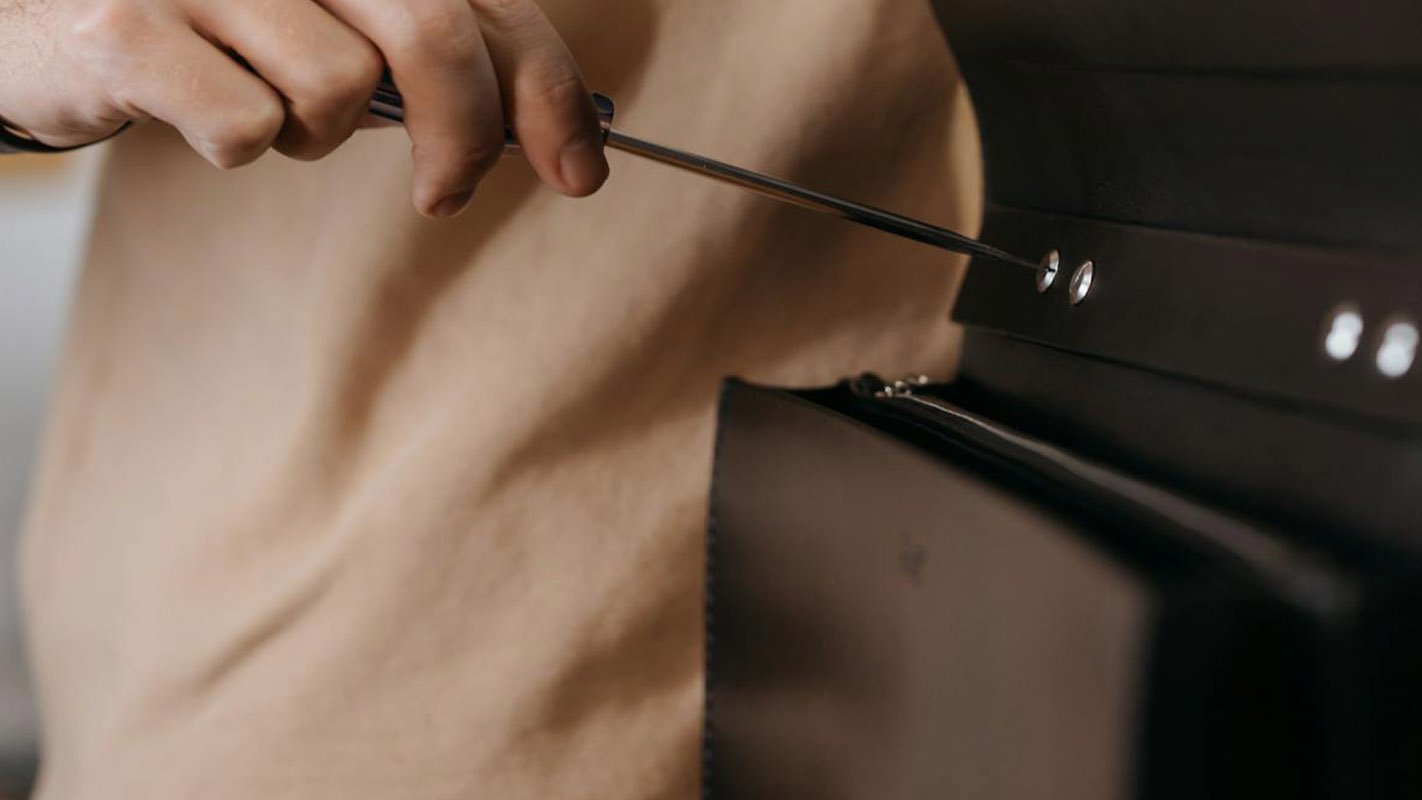
3) Structural corrections
Structural problems in a bag can make it very hard to use. Incorrectly shaped walls or weak corners are common issues. To fix pieces that aren’t round, use leather moisturizer to make the leather a little softer.
Apply light pressure to reshape the panel, and then let it dry in the right shape. You might need to use a mold or stuffing to keep the shape while it dries.
Cut a small piece of matched leather to fit inside a weak corner to strengthen it. Put it down with leather glue and sew around the sides to strengthen it. This enhances the corner without changing how the bag looks from the outside.
According to figures from the industry, 15% of all leather bag fixes are structural. Even though they don’t happen often, these fixes can make a bag last longer.
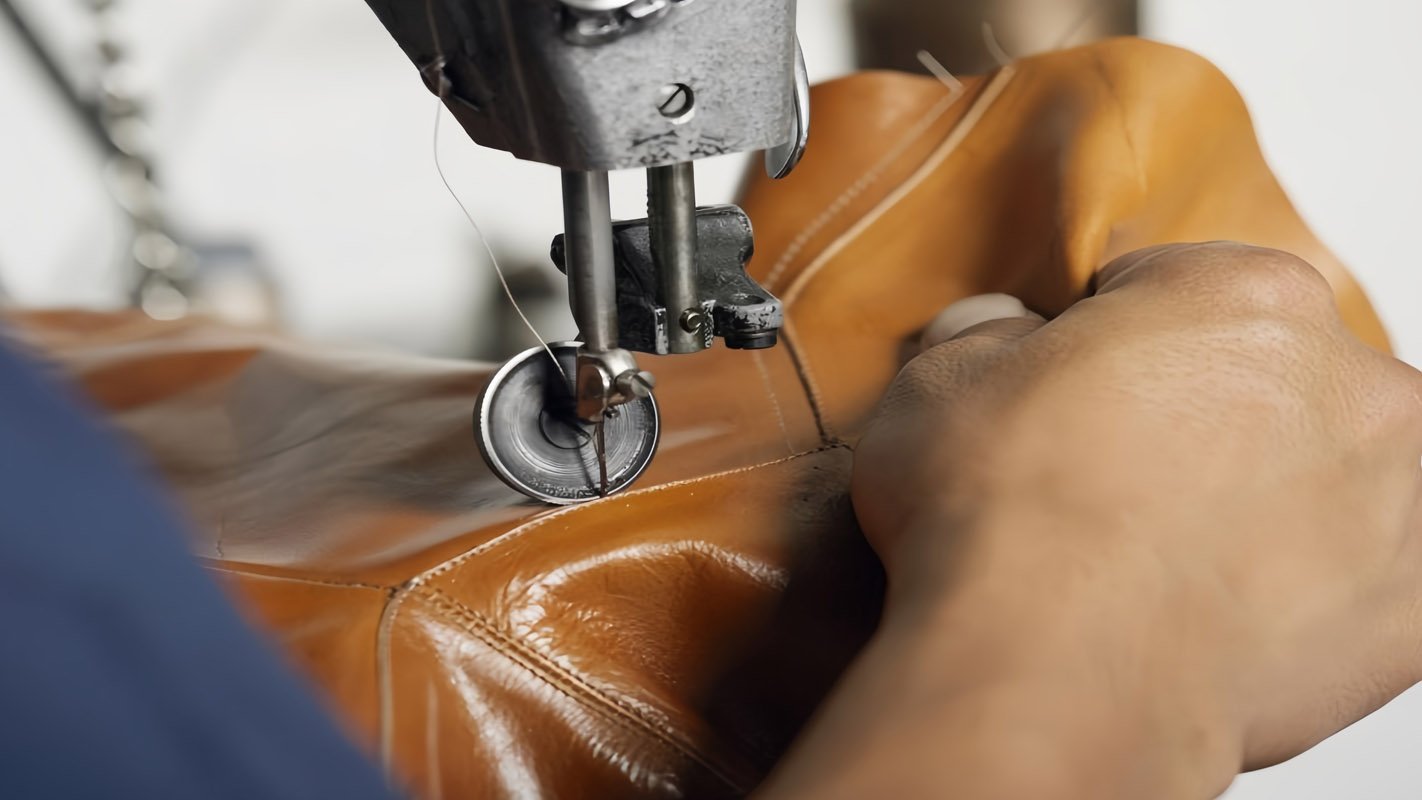
4) Finish restoration
Some leather bags lose their finish over time, which leaves the leather open to damage. Use a leather cleaner to clean the leather bag properly. Then, let it dry all the way through.
If the color has faded, use a leather dye that matches. Once the dye is dry, apply a leather finish product that matches the original finish.
Put on thin, even coats, and let each dry before moving on to the next. Use a leather conditioner at the end to keep the leather soft. Using this service, you can make old bags look a lot better.

5) Lining repairs
Damaged linings can make bags less useful and wear out faster. For small tears, glue the edges together to keep them from coming apart further. Complete lining repair may be needed if the damage is severe. Pull off the old lining carefully, then use it to cut a new one from the suitable fabric.
Attach the new lining with adhesive and stitching, securing all seams. Lining patches are crucial to bag performance and durability.
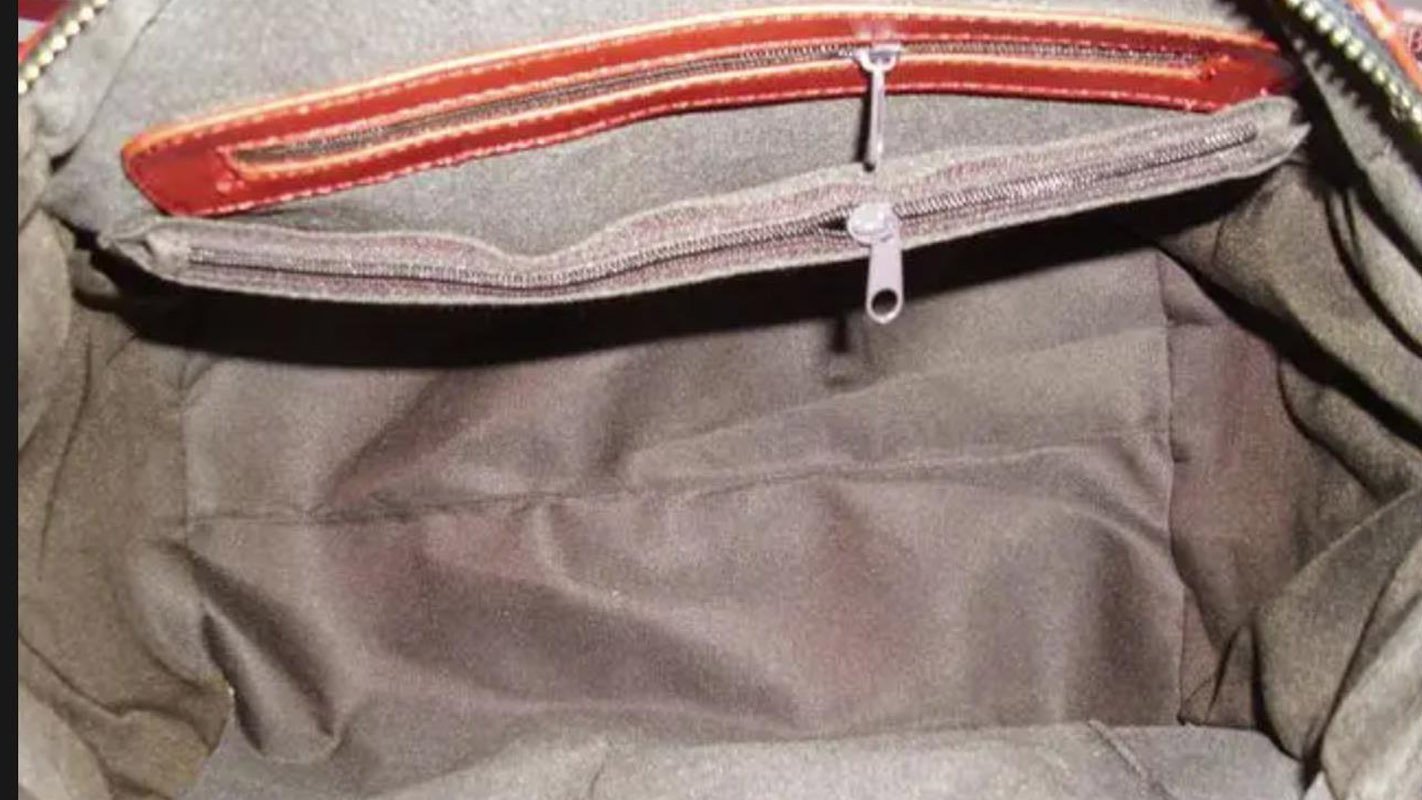
6) Wear and tear repair
Normal wear can cause scuffs, scratches, and worn patches. A leather filler that matches the color can fix minor scratches. Spread it with a tiny spoon, let it dry, then sand it smoothly. However, a leather patch may be needed for severe wear.
Cut a piece of leather that matches the worn spot that is just a bit bigger than it is. Make the sides of the patch and the area around the wear thinner.
Put the patch on with glue and sew around the edges for stability. You may assist customers in maintaining their bags by offering this service.
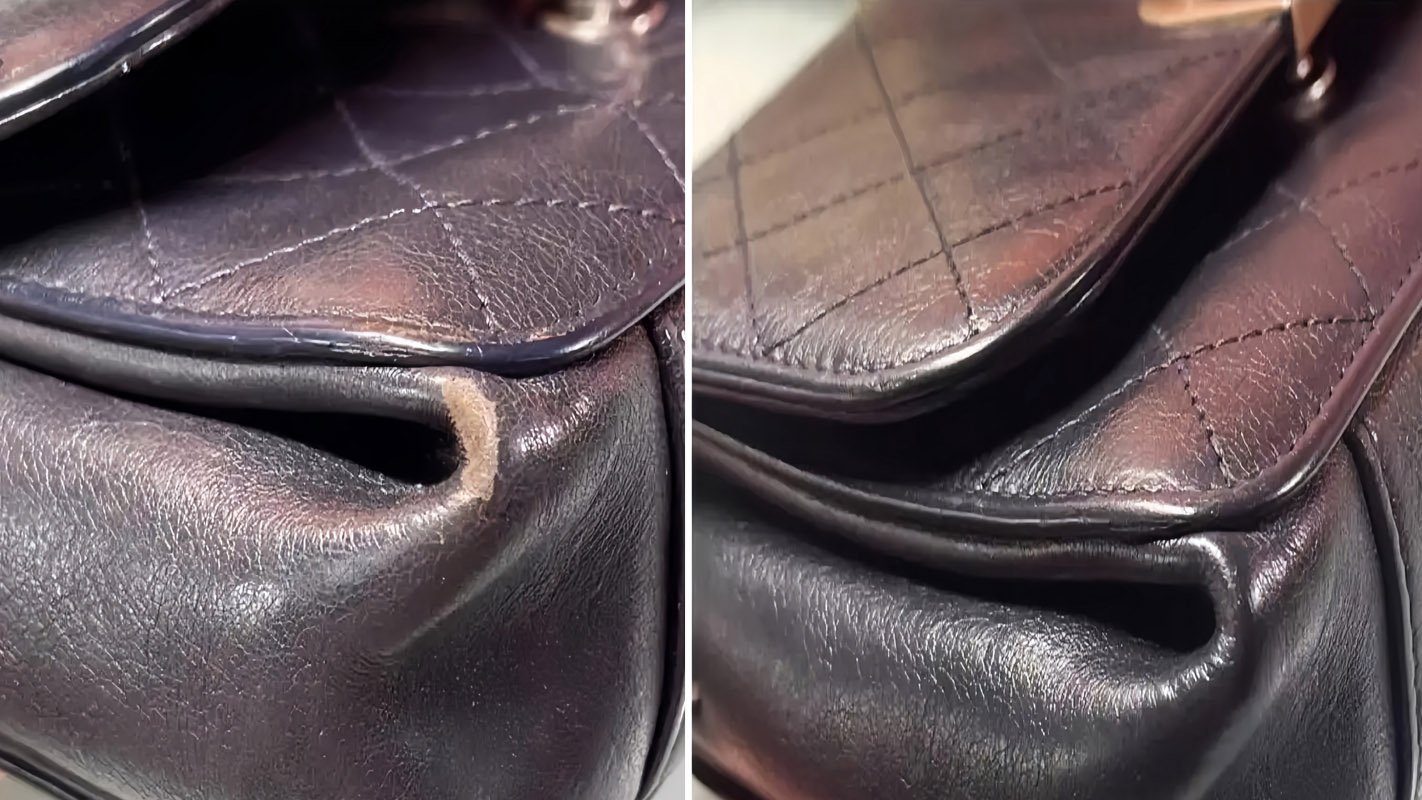
7) Color restoration
Dye-treated leathers fade naturally. Clean and dry a leather purse to restore its color. Use a leather preparer to remove oils and residues.
Also, apply leather dye that matches the leather. Then, spread the dye thinly and evenly with a sponge or cloth. Once the last layer is dry, use the next layer.
Protect the dye after getting the desired color by putting on a leather finish. Finally, condition the leather to keep it supple. This can dramatically improve the appearance of faded bags.
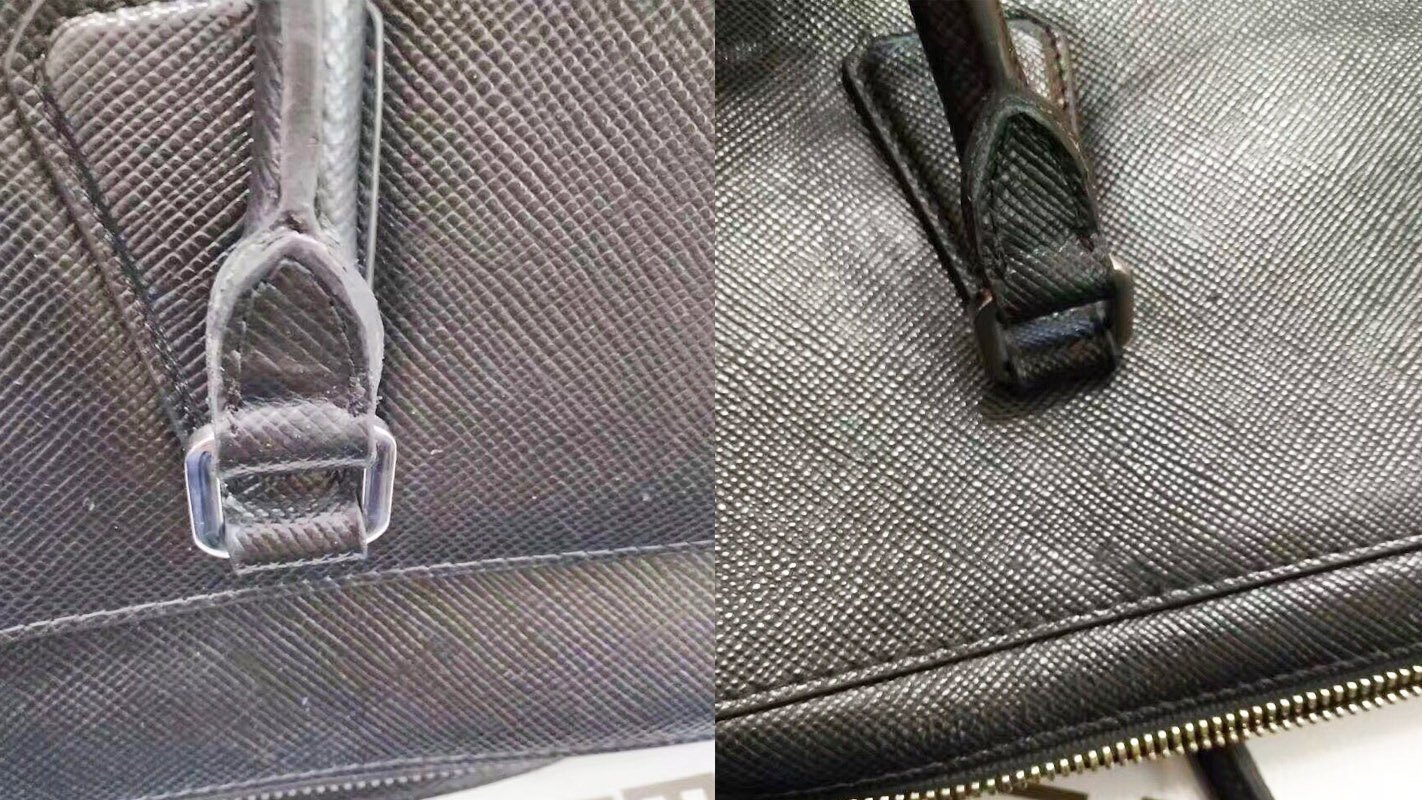
How to Extend the Life of Leather Bags in Your Inventory?
You must maximize inventory life if you sell or buy bulk leather bags. Maintaining leather bags extends their lifespan and retains their value. The following are the most crucial factors that extend leather bag life:
1) Clean Regularly
Leather bags need regular cleaning to stay looking good. Dust, filth, and oils can accumulate on leather. Thus, causing them to wear down and even get damaged. You can schedule product cleaning regularly.
Set a cleaning schedule depending on inventory storage and turnover. Cleaning bags monthly may be adequate if you store them for an extended period.
Showcased or high-traffic items may need weekly cleaning. Always clean your leather bags periodically to maintain their appearance. It also prevents dangerous substances from building up.
This practice not only keeps the bags looking good. However, it also helps find problems early on and fix them immediately.
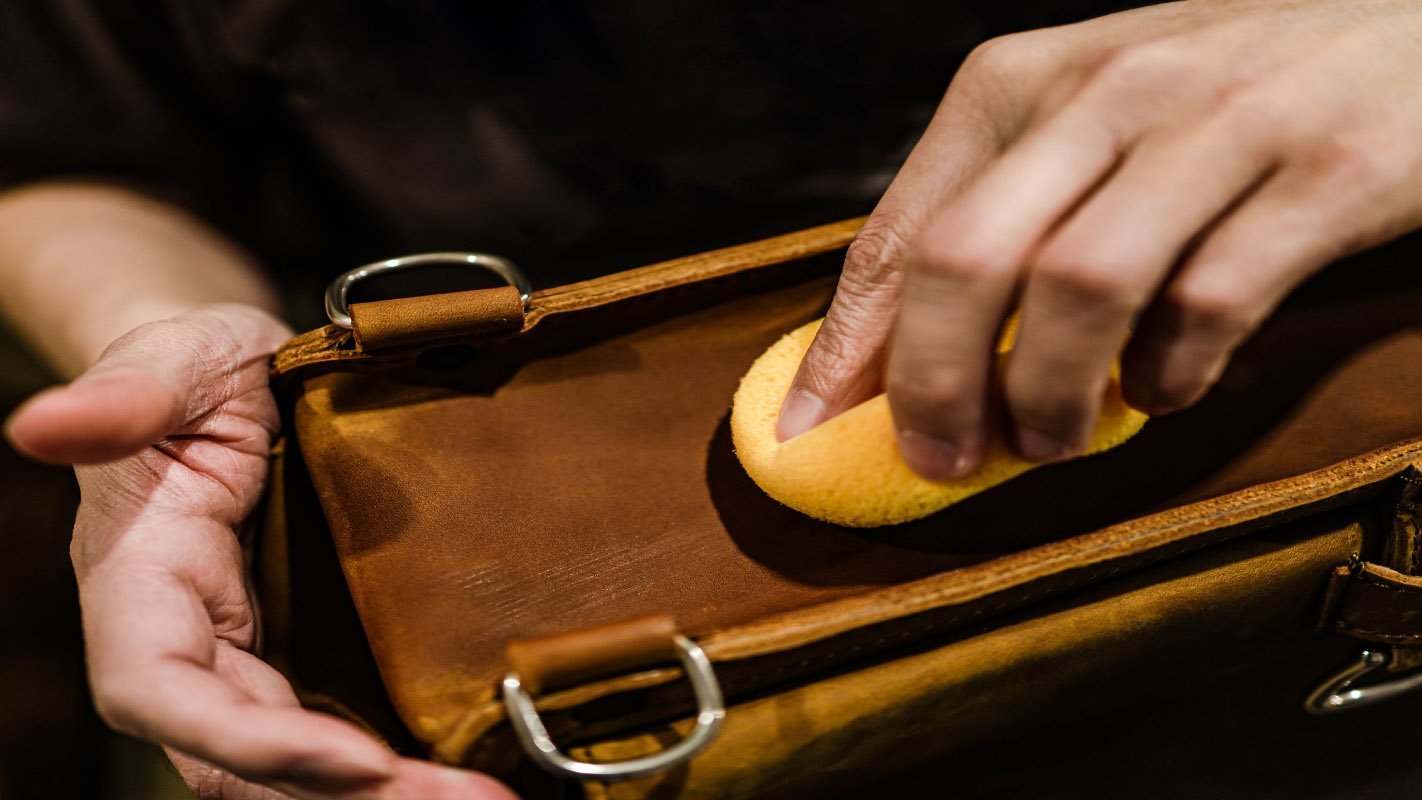
2) Perform Proper Conditioning
Conditioning leather regularly helps restore its natural oils. Doing this keeps the bag flexible and stops it from aging too quickly. Most importantly, use a high-quality leather conditioner. The conditioner must be specifically for your bag’s leather type.
Avoid silicone and oil-based products. This is because they can damage leather over time. Rub the conditioner into the leather using a soft cloth in light circle motions.
Let the leather soak in the conditioner overnight or for a few hours. Buff the surface with a clean, dry cloth to remove excess product.
Doing this brings back the shine of the leather bags in your inventory. How often you condition leather varies on several factors. These include the type of leather, storage method, and the weather.
Treat your leather bags every three to six months as a general rule. In drier climates or for frequent-use bags, you may need to condition more often.
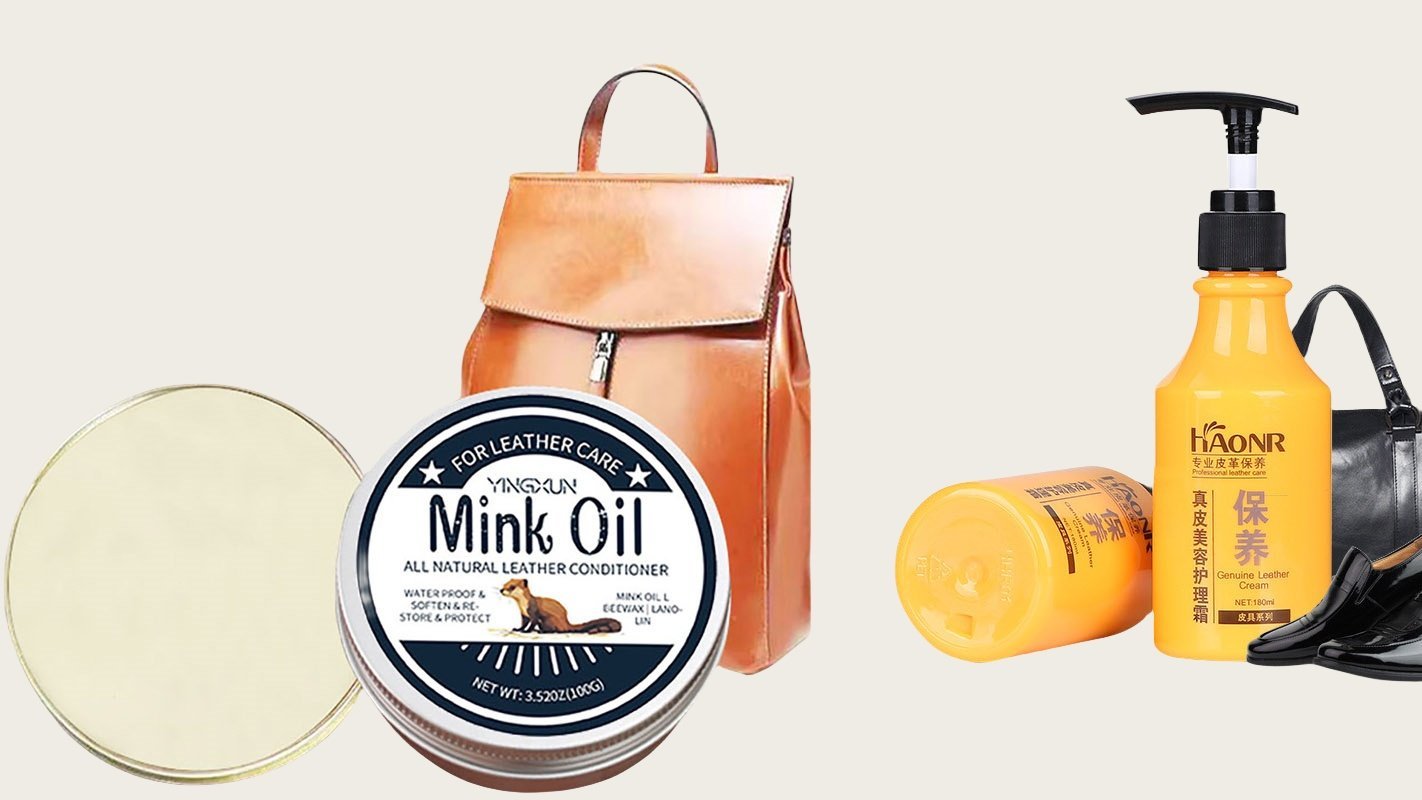
3) Follow Best Practices for Storing
Keeping your leather bag inventory in good condition demands proper storage. If you don’t correctly store leather bags, they can lose shape and fade. They can wear out faster than they should. Keep each leather bag in a cotton dust bag that lets air pass.
This protects the bags from dust, light, and other scratches. If the dust bags are gone, use pillows. Alternatively, you can construct your own from soft, breathable fabric.
Acid-free wrapping paper helps bags keep their form while storing. Overfilling can stress seams and buttons. Keep leather bags cool, dry, and out of direct sunshine and heat.
Don’t store leather bags in plastic. Plastic holds moisture, so mold and mildew thrive. Also, do not lay heavy stuff on top of leather bags.

4) Decide Rotation of Use
A rotation system is essential for stores with display models or sample bags. Doing this keeps the quality of your stock consistent. Make a rotation plan based on the size of your inventory and how you want it to be displayed.
For instance, you could change the bags on the show every week or every month. Write down the names of the bags that have been out and for how long.
When you rotate the bags, look at each one carefully for any damage or signs of wear. With this regular check, you can handle minor problems before they worsen. Clean and condition the bags before putting them back in storage or on show if necessary.
When planning your cycle, think about how different types of leather react. Some leathers need more rotation since their surroundings wear them out faster. By using a smart rotation system, you can keep all of your inventory in great shape.
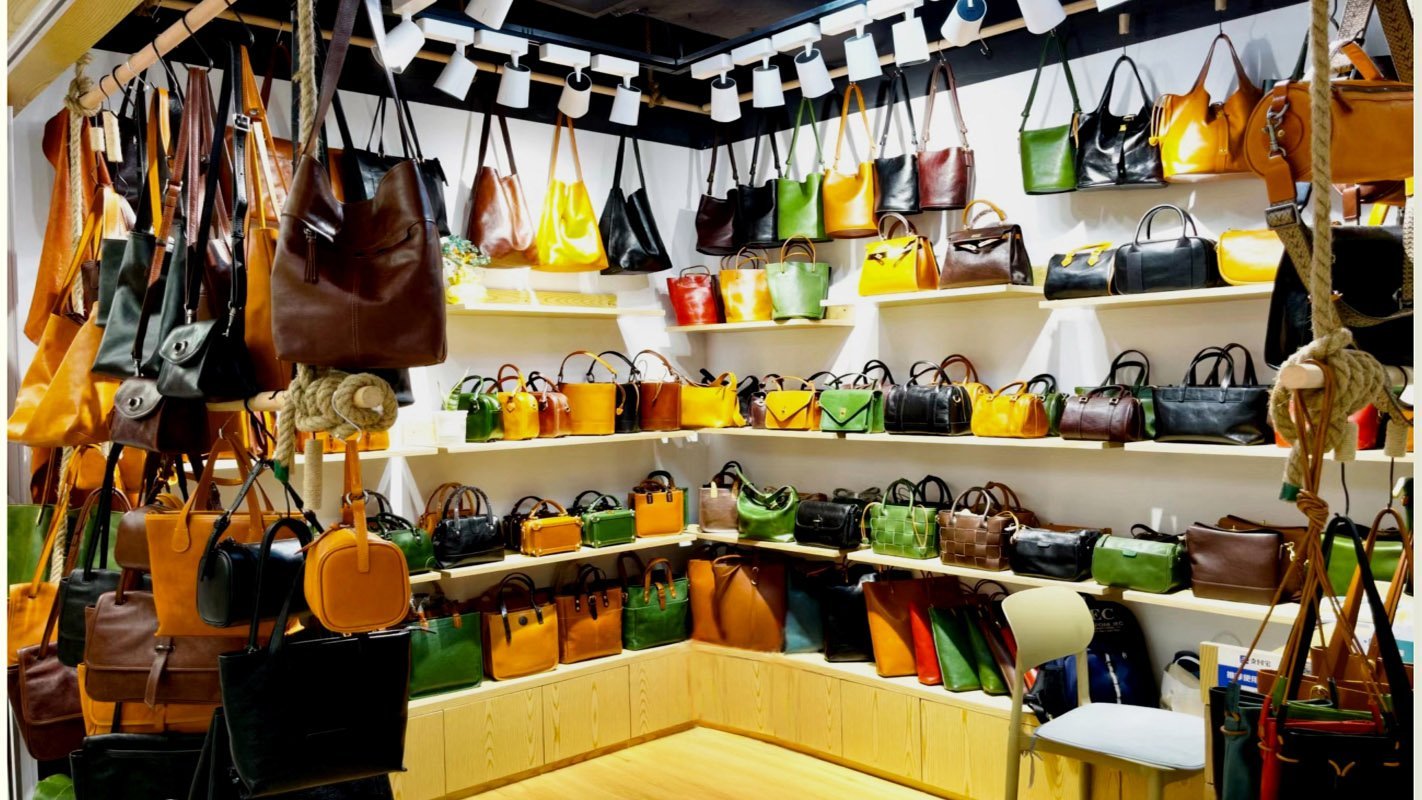
5) Use Proper Transportation
The appropriate shipping procedures protect your leather bag inventory during shipping or delivery. Damage from lousy treatment during shipping can lower the value of your goods.
Make it clear which side of the box should be kept straight and that it is fragile. Use stickers that say “Handle with Care” to indicate that the items are delicate.
When sending leather bags across long distances, consider climate-controlled transportation. This shipping method keeps them safe from extreme temperatures and humidity. Consider shipping insurance for expensive leather luggage.
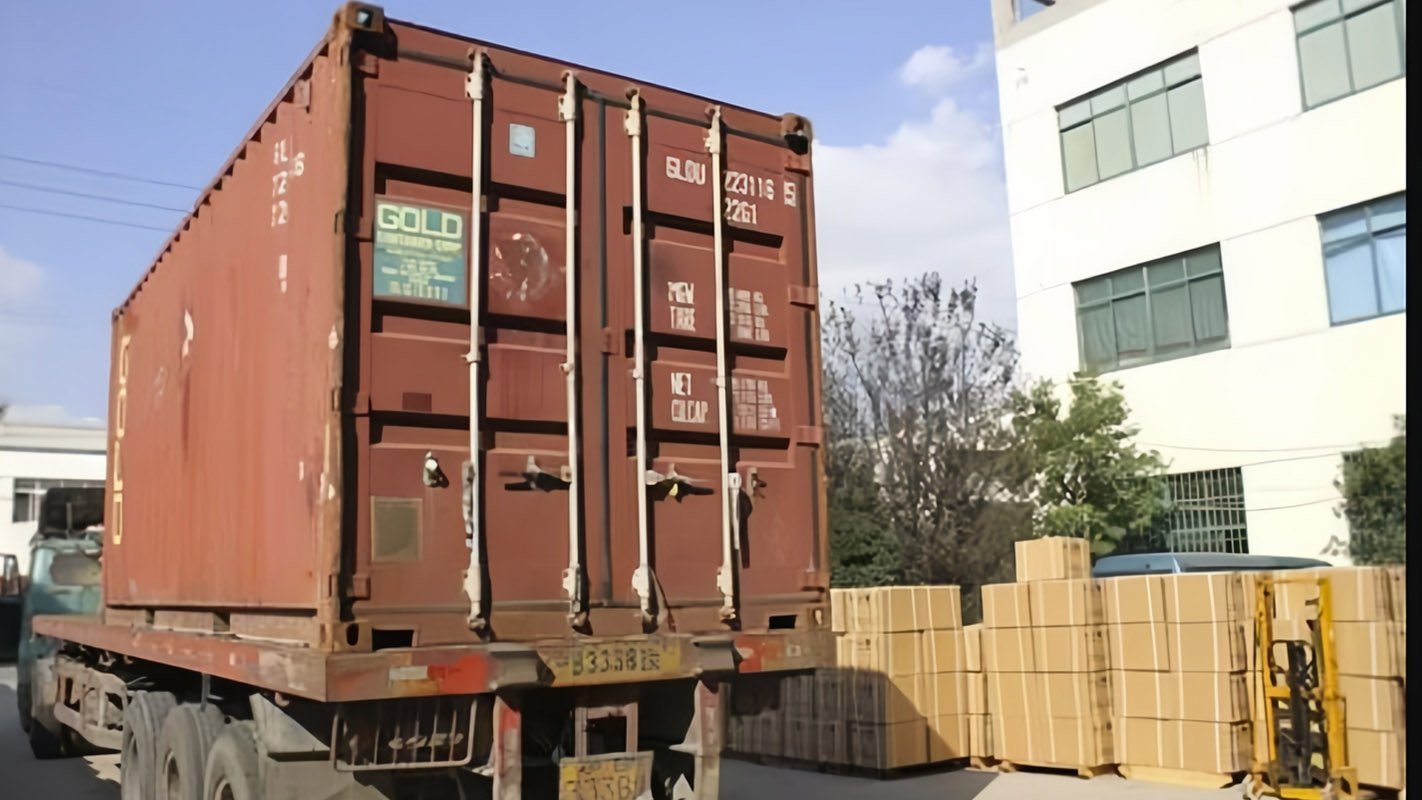
A Standardized Defect Evaluation Process at Mherder!
At Mherder, we understand the importance of quality in the leather bag industry. We designed a standard defect evaluation approach for consistent quality control.
This method helps us accurately judge the state of leather bags. The next step is to decide whether to fix them or get new ones. Then, we communicate clearly with our partners and customers.
1) We have created a defect severity scale
Our defect severity scale sorts defects into groups. It is based on how they affect the bag’s usefulness, good looks, and total worth.
This scale helps us decide which repairs are most important. It also allows us to determine how to be uniform across our inventory. The scale includes:
- Minor (Level 1): Slight flaws that don’t affect how the bag works or looks in a big way. Also, slight color differences fall into this category.
- Moderate (Level 2): Noticeable defects that may slightly affect functionality or appearance. It could be loose stitching or minor hardware issues.
- Major (Level 3): Defects that affect how the bag works or looks must be fixed immediately. Tears in the seams or broken zippers are two examples.
- Critical (Level 4): The bag has significant flaws that make it useless or significantly reduce its worth. It could include damage to the structure or a lot of leather breaking down.
2) We implement a defect reporting system
We’ve established an in-house thorough defect reporting system to streamline quality control. Our thorough reporting system makes our internal processes better. It also aids in quality improvement and supplier evaluation.
Hence, no problems are missed, and the proper steps are taken at the right time. Our process for reporting involves:
- Digital records: Our digital system keeps track of every defect. It does so with pictures, thorough descriptions, and ratings of how bad they are.
- Tracking Numbers: We give each report its tracking number. It allows us to track how the fixes or replacements are going.
- Action Plans: It lists the steps that need to be taken to fix the problem based on how bad the flaw is.
- Resolution tracking: The system tracks how each defect was fixed. It goes from the first report to the final fix. It guarantees everyone is responsible and lets us look for trends over time.
3) We have set up a communication channel for buyers
We communicate openly and swiftly to maintain buyer relationships and ensure client satisfaction. We’ve created distinct channels for defect questions and updates to simplify this. We communicate this way:
| Communication Mode | Our Process |
| Online Portal | Our secure online platform provides quality information for our inventory. |
| Dedicated support team | We have a team whose only job is to answer buyers’ questions. These could be questions concerning product quality and flaws. Our team is trained to respond fast and accurately. |
| Regular quality reports | We check our reports regularly. These summarize defect trends, resolution rates, and efforts to improve quality. |
| Feedback system | Buyers can quickly report on product quality. This medium helps us to know what needs improvement. It also allows us to know the areas we’re doing well. |
4) We offer expert consultation on leather bag repair
Since leather bag repair may be complicated, we provide skilled guidance. This service guarantees professional leather bag repairs to preserve its value. Our meetings with an expert often include:
- Repair assessments: Our experts look at damaged bags carefully. Then, give thorough repair suggestions based on different factors. These may include the repair cost and how it will affect the bag’s value.
- Repair technique guidance: We can advise you on fixing various damages. This guidance will be specific to different leather types.
- Quality control standards: Our specialists explain how to inspect repaired bags. The aim is to ensure they meet our high standards.
- Training resources: We help our partners repair leather bags. To achieve this, we provide them with training materials and classes.
Final Thoughts!
Wholesale/retail leather bag profitability requires proper maintenance and inspection. Leather bags last longer when they are appropriately cared for and maintained. Doing these maintains the value of your bags, and your customers will be happier and loyal.
Standardizing bag evaluation, which Mherder does, offers many benefits. It makes sure that quality evaluations are always the same.
Additionally, it guarantees that efforts to improve quality are based on data. Keep in mind that the leather goods market is very competitive. By 2028, the world leather market will be worth $624.08 billion. Thus, maintaining quality can set you apart in this market.
